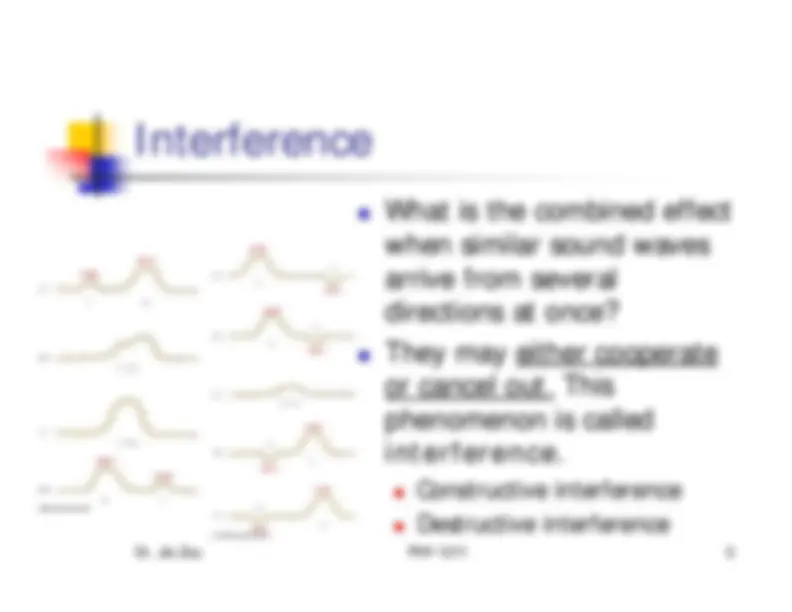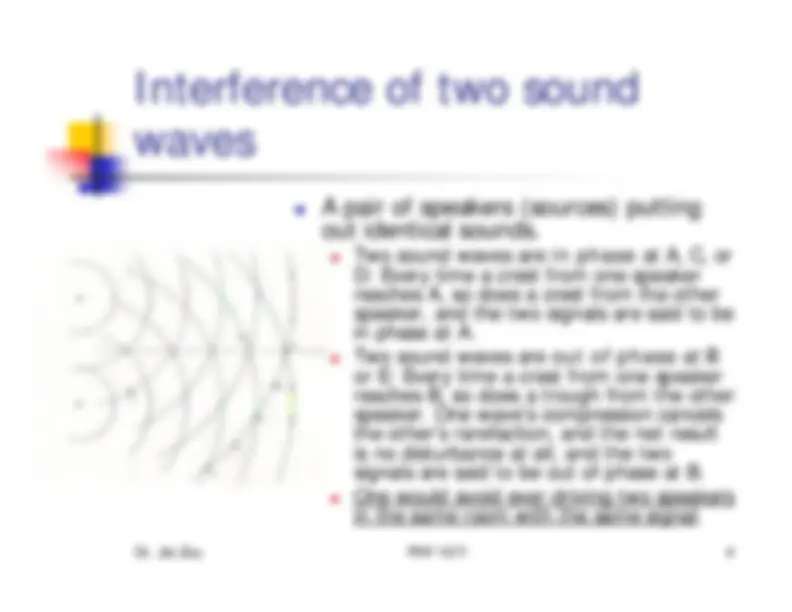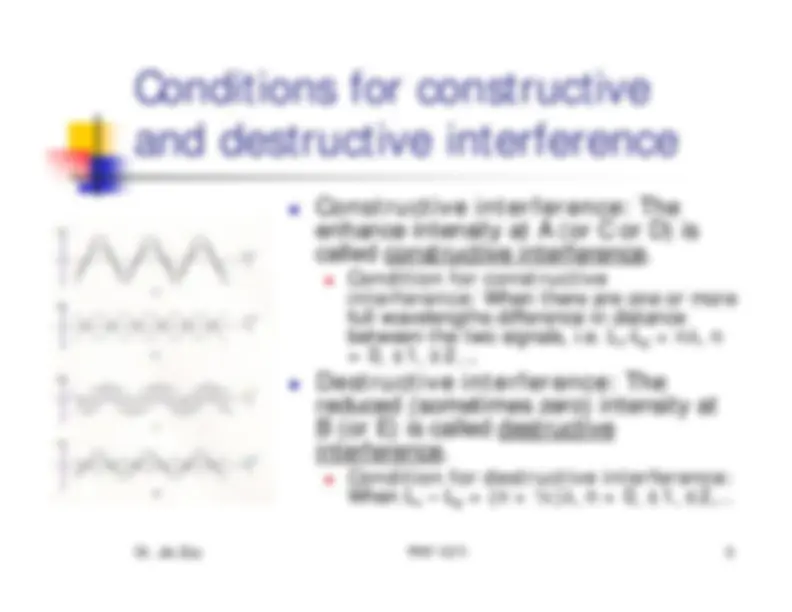





Study with the several resources on Docsity

Earn points by helping other students or get them with a premium plan


Prepare for your exams
Study with the several resources on Docsity

Earn points to download
Earn points by helping other students or get them with a premium plan
Community
Ask the community for help and clear up your study doubts
Discover the best universities in your country according to Docsity users
Free resources
Download our free guides on studying techniques, anxiety management strategies, and thesis advice from Docsity tutors
The concept of interference in sound propagation, explaining how similar sound waves can either cooperate or cancel out, leading to constructive or destructive interference. Examples and conditions for these phenomena, as well as homework exercises.
Typology: Study notes
1 / 7

This page cannot be seen from the preview
Don't miss anything!




Dr. Jie Zou
PHY 1071^
Dr. Jie Zou
PHY 1071^
Dr. Jie Zou
PHY 1071^
in phase
at A, C, or
D: Every time a crest from one speakerreaches A, so does a crest from the otherspeaker, and the two signals are said to bein phase at A. Two sound waves are
out of phase
at B
or E: Every time a crest from one speakerreaches B, so does a trough from the otherspeaker. One wave’s compression cancelsthe other’s rarefaction, and the net resultis no disturbance at all, and the twosignals are said to be out of phase at B. One would avoid ever driving two speakersin the same room with the same signal.
Dr. Jie Zou
PHY 1071^
5
: When there are one or more full wavelengths difference in distancebetween the two signals, i.e. L
-L^ = n 12
λ, n
When L
λ, n = 0, ±1, ±2,...
Dr. Jie Zou
PHY 1071^